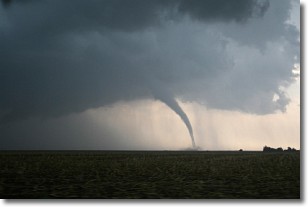Weather Alert in Missouri
Flood Warning issued June 7 at 9:10AM CDT until June 8 at 10:42AM CDT by NWS Springfield MO
AREAS AFFECTED: Cedar, MO
DESCRIPTION: ...The Flood Warning is extended for the following rivers in Missouri... Roubidoux Creek Near Waynesville affecting Pulaski County. James River near Boaz affecting Stone and Christian Counties. Spring River at Carthage affecting Jasper County. Sac River near Caplinger Mills affecting Cedar County. ...The Flood Warning continues for the following rivers in Missouri... Current River near Powder Mill affecting Shannon County. Osage River at Taberville affecting St. Clair and Vernon Counties. Big Piney below Fort Leonard Wood -East Gate affecting Pulaski County. Little Osage River near Horton affecting Vernon County. Marmaton River near Nevada affecting Vernon County. ...The Flood Warning is cancelled for the following rivers in Missouri... Jacks Fork at Alley Spring affecting Shannon County. For the Roubidoux Creek...including Waynesville...Minor flooding is forecast. For the Big Piney River...including Fort Leonard Wood - East Gate... Minor flooding is forecast. For the James River...including Galena, Boaz...Minor flooding is forecast. For the Little Osage River...including Fulton, Horton...Minor flooding is forecast. For the Spring River...including Carthage, Waco, Baxter Springs... Minor flooding is forecast. For the Marmaton River...including Fort Scott, Nevada...Minor flooding is forecast. For the Osage River...including Taberville...Minor flooding is forecast. * WHAT...Minor flooding is occurring. * WHERE...Sac River near Caplinger Mills. * WHEN...Until late tomorrow morning. * IMPACTS...At 16.0 feet, minor Flooding occurs at the gage site. The campground at Caplinger Mills floods. * ADDITIONAL DETAILS... - At 8:45 AM CDT Saturday the stage was 17.2 feet. - Bankfull stage is 16.0 feet. - Recent Activity...The maximum river stage in the 24 hours ending at 8:45 AM CDT Saturday was 18.1 feet. - Forecast...The river will fall below flood stage late this morning to 12.0 feet tomorrow morning. It will then rise to 12.1 feet early tomorrow afternoon. It will fall to 11.7 feet early Monday morning. It will then rise to 14.3 feet Tuesday morning. It will fall again and remain below flood stage. - Flood stage is 16.0 feet. - http://www.weather.gov/safety/flood
INSTRUCTION: Turn around, don't drown when encountering flooded roads. Many flood deaths occur in vehicles. Additional information is available at www.weather.gov. The next statement will be issued this morning at 1015 AM CDT.
Want more detail? Get the Complete 7 Day and Night Detailed Forecast!
Current U.S. National Radar--Current
The Current National Weather Radar is shown below with a UTC Time (subtract 5 hours from UTC to get Eastern Time).

National Weather Forecast--Current
The Current National Weather Forecast and National Weather Map are shown below.

National Weather Forecast for Tomorrow
Tomorrow National Weather Forecast and Tomorrow National Weather Map are show below.

North America Water Vapor (Moisture)
This map shows recent moisture content over North America. Bright and colored areas show high moisture (ie, clouds); brown indicates very little moisture present; black indicates no moisture.

Weather Topic: What are Wall Clouds?
Home - Education - Cloud Types - Wall Clouds
 Next Topic: Altocumulus Clouds
Next Topic: Altocumulus Clouds
A wall cloud forms underneath the base of a cumulonimbus cloud,
and can be a hotbed for deadly tornadoes.
Wall clouds are formed by air flowing into the cumulonimbus clouds, which can
result in the wall cloud descending from the base of the cumulonimbus cloud, or
rising fractus clouds which join to the base of the storm cloud as the wall cloud
takes shape.
Wall clouds can be very large, and in the Northern Hemisphere they generally
form at the southern edge of cumulonimbus clouds.
Next Topic: Altocumulus Clouds
Weather Topic: What are Altostratus Clouds?
Home - Education - Cloud Types - Altostratus Clouds
 Next Topic: Cirrocumulus Clouds
Next Topic: Cirrocumulus Clouds
Altostratus clouds form at mid to high-level altitudes
(between 2 and 7 km) and are created by a warm, stable air mass which causes
water vapor
to condense as it rise through the atmosphere. Usually altostratus clouds are
featureless sheets characterized by a uniform color.
In some cases, wind punching through the cloud formation may give it a waved
appearance, called altostratus undulatus. Altostratus clouds
are commonly seen with other cloud formations accompanying them.
Next Topic: Cirrocumulus Clouds
Current conditions powered by WeatherAPI.com




